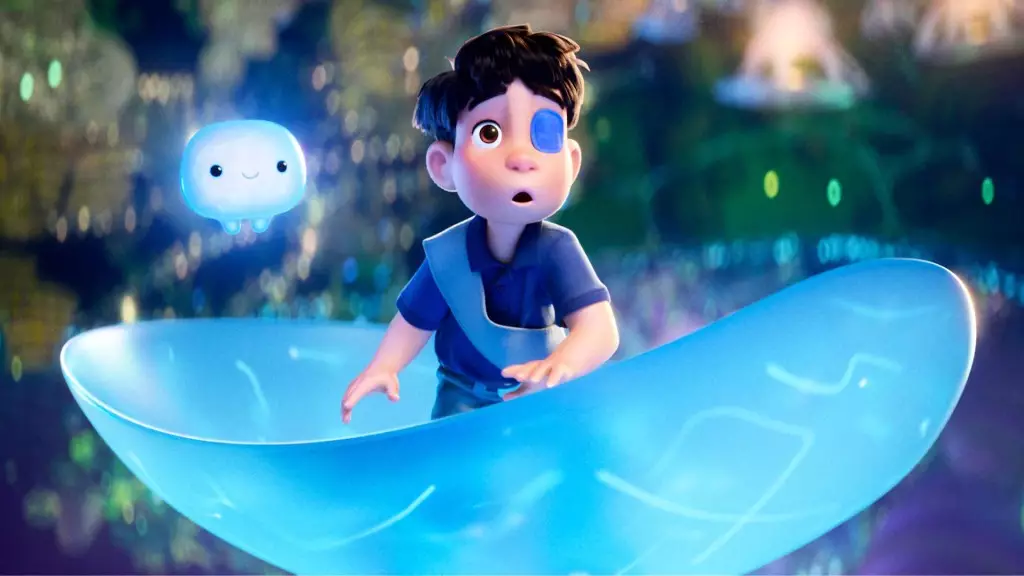The recent release of Pixar’s “Elio” marked a historic low for the animation powerhouse, raking in a pitiful $21 million during its opening weekend—the worst debut among Pixar films to date. This dismal figure should not simply be brushed aside as a one-off anomaly. It reflects a broader crisis in the animation industry, particularly when it comes to original content. Wall Street analyst Doug Creutz has drawn a stark line, indicating that the chasm between original animated films and franchise sequels has never been wider—a trend that spells trouble not only for film studios but also for storytelling creativity in the long term.
It may be tempting to blame this downturn on external factors such as the pandemic or shifting audience interests. However, the reality is deeper and more troubling. The erosion of original ideas signals an industry increasingly reliant on the nostalgia of established franchises. Audiences, while undoubtedly drawn to beloved characters and storylines, seem less enthusiastic about fresh narratives, resulting in studios opting for recycles rather than risk-taking.
The Disconnect Between Critically Acclaimed and Financially Successful
Curiously, “Elio” holds a respectable Rotten Tomatoes score of 84%, placing it within the top tier of critically reviewed films. Reviews appear to praise its creativity and visuals, creating a dissonance between critical acclaim and box office reality. This contradictory environment raises pertinent questions: Are critics out of touch with mainstream audiences? Does a high rating guarantee financial success in today’s market?
Creutz’s research suggests that audiences are not just indifferent; they are actively choosing the familiar over the novel. This reluctance threatens to hinder the growth of original intellectual properties, which are essential for studios to maintain their relevance. In a landscape dominated by sequels and adaptations, this oscillation imperils the very foundation of creative storytelling and its ability to innovate.
Investor Anxiety Merely the Tip of the Iceberg
The impact of “Elio” reverberated beyond box office numbers, sending Disney shares down initially before rebounding slightly, yet the overall anxiety remains palpable. Investors have begun to recognize that the future profitability of the Disney empire hinges more on themes and characters than on storytelling depth. The prospect of diminishing original content raises concerns not only for Disney but across the industry fabric, wherein fear of financial loss prompts studios to retreat into the safety of established IPs.
A sentiment echoed by Dennis Spiegel of International Theme Park Services captures the conundrum perfectly: “Intellectual property has become the cornerstone of the modern theme park industry.” If new and innovative stories fail to materialize, Disney might find its wellspring of attractions draining. As the company continues to rely on past successes to drive its consumer products and theme park experiences, the stagnation of originality serves as a ticking clock toward a cultural malaise.
The Imbalance of Earnings: Original Titles Versus Sequels
Looking at the numbers, Creutz’s analysis indicates that original animated films from major studios like Disney and Universal grossed, on average, $412 million since 2022. In stark contrast, sequels have pulled in an average of $844 million across seven installments. While financial success is crucial, so is the cultural impact of original narratives—something that becomes increasingly scarce in a marketplace that is overly fascinated with the names that carry them.
Consider “The Super Mario Bros. Movie,” a gargantuan box office hit that nonetheless raises eyebrows due to its foundation on a long-established video game franchise. This scenario exemplifies the precarious state of the animation world, wherein originality is both praised and overlooked in favor of brand recognition. The future of animation is not merely a matter of financial predictions—it’s a reflection of the creativity being stifled in favor of a safer, more commercially viable route.
The catastrophic opening weekend of “Elio” isn’t merely a setback for Pixar but a wakeup call for the entire animation industry. The choices made in the coming years will have profound implications for not just future movies but the very essence of storytelling itself. The urgent question remains: will audiences embrace original narratives once again, or will the cycle of reliance on established franchises continue unabated?

